#empedokles
Text

solace :: ©2023 Garth Buckles
* * * *
ὄλβιος, ὅς θείων πραπίδων ἐκτήσατο πλοῦτον,/δειλὸς δ’, ὧι σκοτόεσσα θεῶν πέρι δόξα μέμηλεν.
Fortunate is the person who assembles a wealth of divine understanding, but a miserable wretch is he who tries to manipulate his fellow humans with his conjectures about the gods.
—Empedokles (Ἐμπεδοκλῆς) of Agrigentum, Fragment No. 132 (attr. Theophr., Caus. plant. I 13, 2)(c 444 BCE)
[Robert Scott Horton]
8 notes
·
View notes
Quote
The Muses were goddesses of poetry, but poetry itself encompassed a very wide domain. Many of the pre-Socratic philosophers (Parmenides, Xenophanes, Empedocles) expressed their thoughts in poetry, and Empedocles, at least, invokes the Muses for their aid. [...] Empedocles' use of the figure of the Muse should remind us of the range of the Muses' functions in the culture of early Greece: not only are they givers of pleasure who soothe cares and immortalize the deeds of men in song, as daughters of Mnemosyne they know everything about the past and the unseen world of the gods, and they are also authorities on ethical matters and wisdom generally.
Penelope Murray, “The Muses and their Arts”
#penelope murray#the muses and their arts#muses#mousai#pre socratics#empedokles#hellenic deities#mnemosyne#poetry#philosophy#wisdom#quotes#ancient greece#music
29 notes
·
View notes
Text
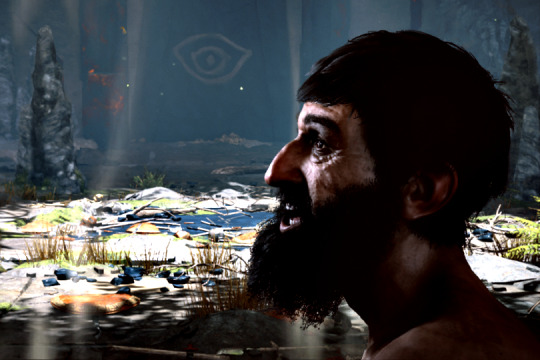




AC Odyssey NPCs
Empedokles | Markos | Daphnae | Eurychlos & Polyphemos
#ac odyssey#apparently there are other characters in the game#empedokles#markos#daphnae#eurychlos#polyphemos
13 notes
·
View notes
Quote
biz aynı yalnızlığı yaşamıyoruz.
amin maalouf - empedokles’in dostları
#amin maalouf#empedokles#empedokles'in dostları#edebiyat#kitap#kitap blog#kitap kurdu#şiir#şiir blog#oğuz atay#tutunamayanlar#korkuyu beklerken#charles bukowski#ahmet erhan#Theodor Adorno#Minima Moralia#vladimir nabokov#varolmanın dayanılmaz hafifliği#albert camus#yabancı#düşüş#sisifos söyleni#bulantı#küçük iskender#tumblr#attila ilhan#elde var hüzün#georges perec#mikhail lermontov#edip cansever
49 notes
·
View notes
Quote
Y nada es más doloroso, Pausanias,
que descifrar una pena. ¿Es que no lo ves?
Friedrich Hölderlin, fragmento de la primera versión de Empédocles. Traducción de Anacleto Ferrer.
25 notes
·
View notes
Text
Who of you knows a lot about Empedokles? 🤲🏻
#Zenobia asks#(research related)#helpol#hellenic polytheist#hellenic polytheism#classical studies#classics#Empedocles#Empedokles
6 notes
·
View notes
Text
Liksom hos Herakleitos utmärks världen i Empedokles’ teori av ett ständigt blivande; världen är hela tiden på väg i den ena eller den andra riktningen, antingen så att splittringens makt är på frammarsch eller också kärlekens. Den växlingen vi ser är nämligen led i en större cyklisk rörelse som pendlar mellan kärlek och hat, ett ständigt kretslopp där kärlekens tidsålder utmärks av att elementen är förenade i en enda stor blandning, en sorts kosmisk legering, varefter följer en övergångstid då hatets makt börjar göra sig gällande, en tid som avslutas av att hatet dominerar och elementen är skilda från varandra i ofruktbar isolering, luft för sig, vatten för sig, jord för sig, eld för sig. Så träder kärleken på nytt in på den kosmiska scenen, elementen förenas och en ny tidscykel tar sin början.
Ronny Ambjörnsson, Europas idéhistoria. Antiken, Människors undran
#ronny ambjörnsson#europas idéhistoria#människors undran#facklitteratur#empedokles#herakleitos#elementläran#idéhistoria
1 note
·
View note
Text
Unter Beratern und Experten
Fordern, was sein soll, ist billig. Dagegen kostet eine einzige Tat, die gelingen kann, lange und oft zu scheiternde Arbeit. Aber Täter könnt ihr nicht mehr sein, keiner traut sich. Jede Tat ist verhängnisvoll, und eigentlich scheut ihr die Arbeit.
0 notes
Text
Anaxagoras [...] like Empedokles, leads all coming-to-be and passing-away back to mixing [Mischung] and separating out [Entmischung], but as final mixing elements claims an unlimited multiplicity of qualitatively determined but different from each other ur-materials, that he calls the seeds of things [...].
– Friedrich Ueberweg, Philosophie des Altertums
1 note
·
View note
Text
Optik Bilimi Nedir? - Optik Biliminin Kurucusu ve Tarihi
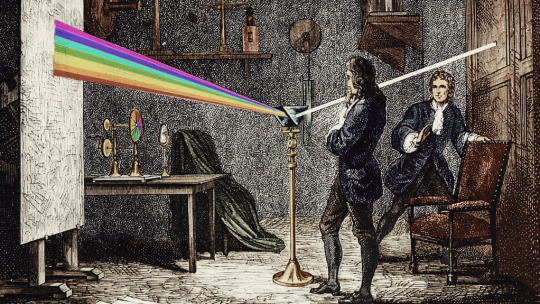
Optik Bilimi Nedir? - Optik Biliminin Kurucusu ve Tarihi
Optik Bilimi Nedir? Optik biliminin hikayesi nedir? Optik bilimini kurucusu? Gibi sorulara yanıt bulmak adına yine tarihe uzun bir bakış atıp optik biliminin bilinen en eski çalışmalarını geçmişten günümüze gelecek bir şekilde anlatmaya çalışacağız.
Hikayemiz her zaman olduğu gibi antik medeniyetlerden Mezopotamya’dan başlıyor. Pek çok disiplinin ve bilim dalının ilk örneklerini gördüğümüz Mezopotamya Uygarlıkları tarihe ışık tutarcasına bilimin önde gelenlerinden olmuştur.
Mezopotamya’dan çıkıp her zaman olduğu gibi Antik Yunana ardından İslam Coğrafyasındaki çalışmalara göz atacağız. Bilimin tekrar batıya, Avrupa’ya geçmesiyle birlikte yönümüzü batıya doğru çevireceğiz. Rönesans hareketiyle başlayan bilimsel ilerlemeye ortak olup günümüze kadar uzanan bu hikayenin nasıl geliştiğine dair bilgi sahibi olmaya çalışacağız.
İnsanlığın Serüveni adlı kategoride günümüzde ve geçmişte var olan bilim dallarının ve çeşitli alanlardaki yapılan çalışmaların geçmişten günümüze kronolojik bir şekilde işleyerek gerekli konu ve konular hakkında bilgi deposu oluşturmayı amaçlıyoruz.
Bu serüven kronolojik bir sıraya ve bu alan hakkında yapılan neredeyse tüm çalışmaları içereceği için konu biraz uzun olacaktır. Gözden kaçmış konu ve şahsiyetler bulunabilir bunun için konu altına yorum yapmayı unutmayınız.
Giriş
Optik Bilimi Nedir? Adlı hikayemizde pek çok alana ve şahsiyete değineceğiz. Neredeyse her bölüm kendi kategorisi altında detaylı bir şekilde işlenecektir. Bu yazıda ise çok derine inmeden optik alanında çalışma yapan uygarlık ve önemli bilim insanlarından bahsedilecektir.
Tarihe uzanamadan önce optiğin ne olduğunu, ne işe yaradığını dair ufak bir açıklamada bulunalım.
Optik Bilimi Nedir?
İlk olarak optik biliminin ne olduğuna dair kısa bir açıklamada bulunalım. Optik bilimi veya disiplini temelde ışığın hareketlerini, özelliklerini ve madde ile olan etkileşimini inceleyen bilim alt dalıdır. Gözle görebildiğimiz veya göremediğimiz bütün ışık dalgalarını inceleyen optik bilimi, fizik ve astronomi gibi yine kadim bir bilim dalıdır. Astronomi, fotoğrafçılık ve diğer alanlarla yakından ilişkisi olan optik dalı özellikle astronomi alanıyla ilişkilidir. Dünyamızdan uzaktaki gök cisimlerini veya dünyamızda bulunan mikrop veya gözle görülemeyen canlıları görmemizi sağlayan en temel bilim dalıdır.
Astronomi Nedir ve Tarihi Hakkında daha fazla bilgi almak için tıklayın.
Klasik ve modern olmak üzere tarihsel süreçte 2 farklı kola ayrılan optik dalı, MÖ 330 yıllarında Öklid’in çalışmalarıyla klasik optiğin alt dalı olan geometrik optik hayat bulur. Ondan önce yapılan çalışmalar klasik optik adı ile anılırken 1600 yılında Kepler modern optiğin temelini atarak optiğe yeni bir bakış açısı kazandırır.
Optik biliminin gelişmesiyle gözlükleri, teleskopları, fotoğraf makinalarını, mikroskopları, büyüteçleri ve bunlar gibi pek çok aleti daha verimli bir şekilde kullanıyoruz.
İlk Buluntular, Mezopotamya’da Optik Bilimi
Antik Medeniyetlerde optik adına yapılan çalışmalardan haberdarız. Görme eylemini nasıl gerçekleştiğini ilk soranlar yazılı kaynaklardan anladığımıza göre şüphesiz onlardı. Yapılan kazılarda ortaya çıkan cam bilyelere ve yazılara göre optik bilimi o zamanlarda gündelik ihtiyaçlar için araç gereç yapımında kullanılıyordu.
Antik Mısırda Optik Çalışmaları
MÖ 1386 yıllarında III. Amenhotep’in tahta çıkmasıyla birlikte Mısır’da bir cam furyası baş gösterdi. Cam süslemelere oldukça düşkün olan III. Amenhotep zanaatkarlarına bu alana yönelmeleri ve göze daha hoş gözükecek cam eserler ortaya çıkarması konusunda baskı yapıyordu. Yapılan kazılar sonucunda renkli camlar bulundu, bu bize Antik Mısır’da yapılan çalışmaların oldukça iyi bir seviyede olduğunu gösteriyor.
İlk Cam Reçetesi ve Antik Babil
Bir diğer Mezopotamya medeniyeti olan Babil cam zanaatı konusunda Mısır’dan oldukça ilerideydi. Cam zanaatkarlığı oldukça ileri seviye olan Babil, bunu yazılı olarak kil tabletlere işliyordu. Kazılarda ortaya çıkan ilk cam reçetesi Babil uygarlığına aittir. Reçetede bir camın nasıl ve hangi ölçüler kullanılarak meydana geldiği yazmaktadır.
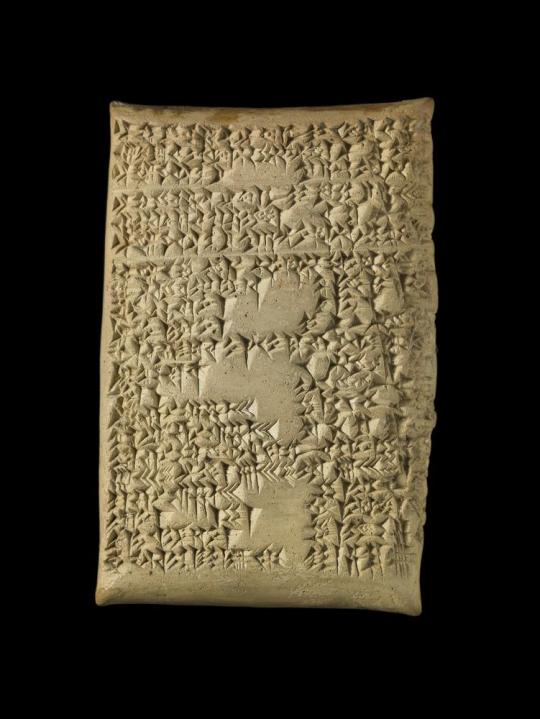
British Museum'da Bulunan Antik Babil Cam Reçetesi
Reçetede yazanlara göre;
- 60 ölçü kum
- 180 ölçü alg
- Deniz yosunu külü
- 5 ölçü güherçile
- 3 ölçü tebeşir
Kullanılarak cam elde ediliyordu.
Nimrud Merceği ve Asurlular
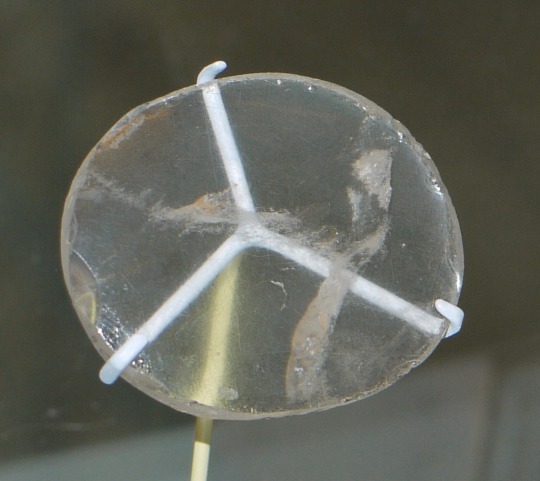
Asurluların Nimrud Merceği
Bilinen ilk mercekler Asurlular tarafından yapıldı, genellikle cilalı kristalden veya kuvars minarelinden oluşmaktaydı. MÖ 700 yıllarında üretildiği ve işlendiği sanılan Asurluların yaptığı Nimrud Merceği günümüzde British Museum’da sergilenmektedir. 3000 Yaşında olduğu tespit edilen Nimrud Merceği günümüze gelebilmiş en eski mercektir.
Antik Roma'da Optik
Antik Roma’da yapılan kazılara sonucunda Romalılarında mercekler hakkında bilgi sahibi oldukları ve bunları günlük hayatta kullandıkları ortaya çıktı. Cam kürelere su doldurarak mercek niyetine kullanıyorlardı. Romalılar ile aynı tarihte Fenikelilerde benzer bir yöntem ile düşman gemilerinin geldiğini haber veren optik bir haberleşme sistemi kurdu.
Antik Hindistan'daki Felsefi Okullar
Mezopotamya ve civarında bu tür gelişmeler olurken bilinen ilk felsefi gelişmeler Antik Hindistan’da yaşandı. MÖ 6. Ve 5. Yüzyıllarda Samkhya ve Vaisheshika felsefi okulları ışık ve görme üzerine birbirine rakip olacak derecede çeşitli teoriler geliştirdi.
Samkhya okuluna göre ışık, kendi hariç 5 temel elementten biri olmalıydı.
Vaisheshika okulu ise biraz fiziki bir yol izleyerek ışığın ateşin hızına ve düzeyine bağlı olarak farklı özelliklere bürüneceğini öne sürdü.
Antik Yunan Filozofları ve Optik
Antik Yunan filozoflarıyla birlikte optik alanındaki çalışmalar teorik anlamda artar ve önem kazanır. Neredeyse her yunan filozofu ışık ve görme eyleminin nasıl gerçekleştiğine dair sorulara cevap bulmak adına çalışmalara imza atmıştır.
Empedokles ve 4 Temel Madde
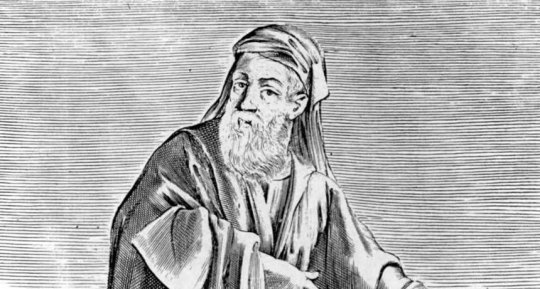
Antik Yunan Filozofu Empedokles
Bu alandaki ilk düşünceler Empedokles ile MÖ 494-434 yılları arasında yaptığı felsefi düşüncelerle başlar. Empedokles evrenin 4 temel maddeden oluştuğunu öne süren bir düşünce ortaya atar. Ateş, hava, toprak ve su bu 4 temel elementtir. İnsan gözü ise ona göre Afrodit tarafından insanlara bahşedilen 4 temel elementten ayrı olarak tuttuğu başka bir maddeden yapılmıştır. Empedokles gözümüzden ışınlar çıktığını ve bu sayede görebildiğimize inanıyordu.
Yakında eklenecek konular ile astronomi tarihinin devamlılığı sağlanacaktır.
Kaynak: https://bilimuzay.com/optik-bilimi-nedir-optik-biliminn-kurucusu-ve-tarihi/
Read the full article
#antikbabil#antikhindistan#antikmısır#antikyunan#asurlular#babiluygarlığı#empedokles#mezopotamya#nimrudmerceği#optik#optikbiliminedir#optikbilimininkurucusu
1 note
·
View note
Text
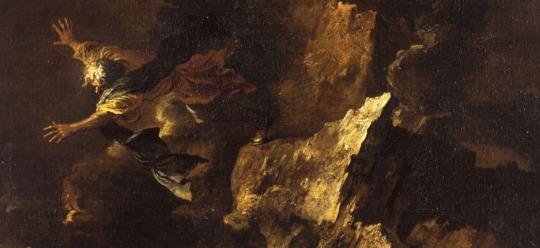
ὄλβιος, ὅς θείων πραπίδων ἐκτήσατο πλοῦτον,/δειλὸς δ’, ὧι σκοτόεσσα θεῶν πέρι δόξα μέμηλεν.
Fortunate is the person who assembles a wealth of divine understanding, but a miserable wretch is he who tries to manipulate his fellow humans with his conjectures about the gods.
—Empedokles (Ἐμπεδοκλῆς) of Agrigentum, Fragment No. 132 (attr. Theophr., Caus. plant. I 13, 2)(c 444 BCE)
[Robert Scott Horton]
19 notes
·
View notes
Quote
este pecho que os presintió con amor, ¿por qué lo precipitáis en el abismo y lo atáis con vergonzosas ligaduras, a él, que nació libre, que existe por sí mismo y no por ningún otro?
Friedrich Hölderlin, La muerte de Empédocles
8 notes
·
View notes
Note
It's so funny (and annoying) seeing people associate Artemis with the moon and Apollo with the sun. Like, people? That's Roman gods Diana and Apollo.
As far as I know Apollo was associated only with the light in Greek mythology but not with the sun, right? That was Helios. And of course Artemis had nothing to do with the moon.
I can see what you mean. It is particularly annoying when "god of the sun/goddess of the moon" are used as their primary identifications, and one of my biggest pet peeves in Trojan War retellings is the characters calling the sun Apollo. It's so anachronistic please stop.
That said, while this idea doesn't really seem to be attested in the Archaic period, the association between these two gods and the sun and moon apparently existed in Classical Greece. To quote Timothy Gantz's Early Greek Myth: A Guide to Literary and Artistic Sources:
„Whatever his other early interests, no source prior to the fifth century ever calls (Apollo) the sun (the latter is always Helios or Hyperion). Parmenides and Empedokles may have done so, if a late source can be trusted, but seemingly in the context of philosophic structures that found physical equivalents for many of the gods. Eventually, and for perhaps the same reasons, the idea also surfaces in Orphic texts. But the first sure literary identification of Apollo with the sun occurs no earlier than Euripides, in a fragment of his lost Phaethon (fr 781.10-12 N2), and we cannot tell from the text whether the innovation is his or something previously in circulation. Earlier in the century there are admittedly some suspect moments in Aischylos on this point: we have seen that the playwright probably does link the moon with Artemis (fr 170 R), and his Hiketides (212–14) has been thought by some to call the rays of the sun Apollo. In addition, the same poet's lost Bassarides may have contained a reference to the dismemberment of Orpheus by those women, who we are told were sent by Dionysos because Orpheus ignored him and worshipped only Helios, whom he called Apollo (p. 138 R).
I must confess that I am skeptical of most of this evidence: the tale of Orpheus comes from Ps-Eratosthenes, who cites Aischylos for one brief point near the end of the story, suggesting that the rest of the account (including Helios/Apollo) derives from other sources (Katast 24). 37 As for the Hiketides, the link between Apollo and the sun there is achieved largely by emendation of an (admittedly corrupt) text that originally implied just the opposite. 38 And while different plays are entitled to different views, we should note that in the Choephoroi Helios is addressed by Orestes in a way that emphasizes his separation from Apollo (Cho 984-86). Still, there is the reference to Artemis as the moon, if we have read the fragment correctly. Whenever the connection between god and sun was made, it was surely fostered by Apollo's title of Phoibos, used so often by Homer and the Hymn to Apollo (with or without Apollo added), and meaning (or thought to mean) "shining." But on balance we should probably conclude that the myths of the Archaic period (virtually) always made Helios and Apollo two separate figures; they are never confused in early art.”
In the Iliad scholia, the Theomachy from Books 20-21 is interpreted allegorically and Artemis is said to represent the moon (Hera the air, Hermes reason, etc, and possibly Theagenes of Rhegium (6th century BCE) is responsible for this idea. I can't confirm though whether or not he was cited as a source in the scholia, I'll need to look more into this. Artemis is clearly associated with the moon by Greek authors dating from the Roman period (ex. Plutarch), but her identification with the moon goddess Diana most probably explains why.
Personally I don't refer to Artemis as the goddess of the moon or Apollo the god of the sun, let alone as the actual moon or sun.
13 notes
·
View notes
Photo

Friedrich Hölderlin, extracto de «Empedokles (Fragmentos)» en Doce poemas. Traducción de José María Valverde.
Esto resume una poderosísima idea de Hölderlin, que tiene que ver con su interpretación de la tragedia en el marco de una teoría poetológica:
En efecto, propiamente, lo originario solo puede aparecer en su debilidad, pero, en cuanto que el signo en sí mismo es puesto como insignificante = 0, puede también lo originario, el fondo oculto de toda naturaleza, presentarse. Si la naturaleza se presenta propiamente en su más débil don, entonces el signo, cuando ella se presenta en su más fuerte don, es = 0
(«El significado de las tragedias» en Ensayos. Traducción de Felipe Martínez Marzoa)
#friedrich hölderlin#empédocles#empedokles#doce poemas#josé maría valverde#la significación de las tragedias#ensayos#felipe martínez marzoa
13 notes
·
View notes
Text
What kind of professor is Abronsius anyway?
Without calling out any writing in particular, I must say that it always makes me feel a bit weird when fics have prof. Abronsius be something like an anthropologist, linguist, cultural studies researcher, historian or even theologist. His approach is so deeply biological and physical that I have a hard time wrapping my head around it. At the same time, though, I get the urge to put him in those other categories - after all, that's the type of researchers that would study vampires (or vampire-related beliefs) IRL. But still...
My thoughts are based on following things in the show:
Abronsius' colleagues not understanding him and thinking he's a bit of a lunatic. If he was studying vampire-related beliefs in Transylvania, there would be little reason for a fellow cultural studies scholar etc to be disappointed or bewildered! Although I guess there could be church interference? But based on my historical and cultural knowledge, the Lutheran church of the 19th and 20th centuries (the now defunct Königsberg uni was protestant and more specifically Lutheran) wasn't that strict about "heresy" (even though they were quite strict about morality).
Him wanting to pickle Krolock in formaldehyde XD
A lot of focus on physical observations, practical vampire-slaying and hands-on stuff; a mechanical, "cold and hard" worldview, even. And him saying he took apart a cuckoo clock as a small child - very practical, empirical knowledge. His goal is to prove vampires exist concretely, not to examine why they have such cultural influence and power in the region.
His most famous (?) book is about bats!
Things that contradict this:
Aristoteles, Empedokles, Aeneas, Parmenides... Most of the ppl he lists enthusiastically in Bücher were political scientists or philosophers, with some mathematicians and doctors thrown in. Though this could be explained away with Abronsius being well-read, fancying himself a polymath of sorts and admiring the "great men of science" of the past. And like I said, a bunch of premodern scientists were kinda "jack of all trades" about it.
So tl;dr, I think Abronsius is a rogue biologist who got a little too invested after studying vampire bats for many years.
As for Alfred, I guess that makes him a biology student (could also be a medical student? Maybe that's me projecting what I know of 19th century Finnish scientists: a lot of them were folklorists and linguists in addition to their "primary" position as doctors), although that's left a lot more ambiguous. I think he probably isn't very passionate about his field anyway.
82 notes
·
View notes
Text
"felsefe yükselerek yapılmaz, yani tepeden bakarak yapılmaz. aksine yerin dibine geçmek de aynı değerdedir. yani alt sınıfa inmek, kendini azaltmak, kendine özgü bir soyluluğa sahiptir. bunu da zaten bir anekdotla, bir metaforla yapıyor empedokles. Etna yanardağına atlamış işte efsaneye göre. öyle bir adamın yaşayıp yaşamadığı da bilinmez. Etna yanardağına atlayıp atlamadığı da bilinmez ama Etna yanardağı vardır ve içine atlanabilir. o yüzden meselenin kendisi, ne anlattığı önemli. bu "düşme"ye değer verip vermeyeceğimizin meselesi"
5 notes
·
View notes